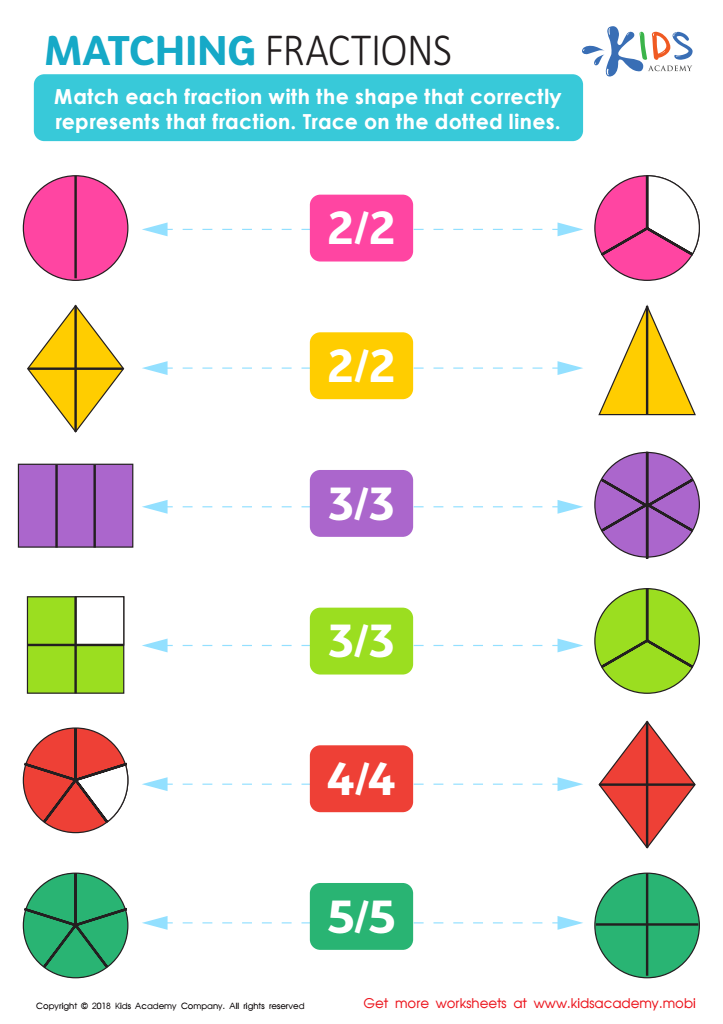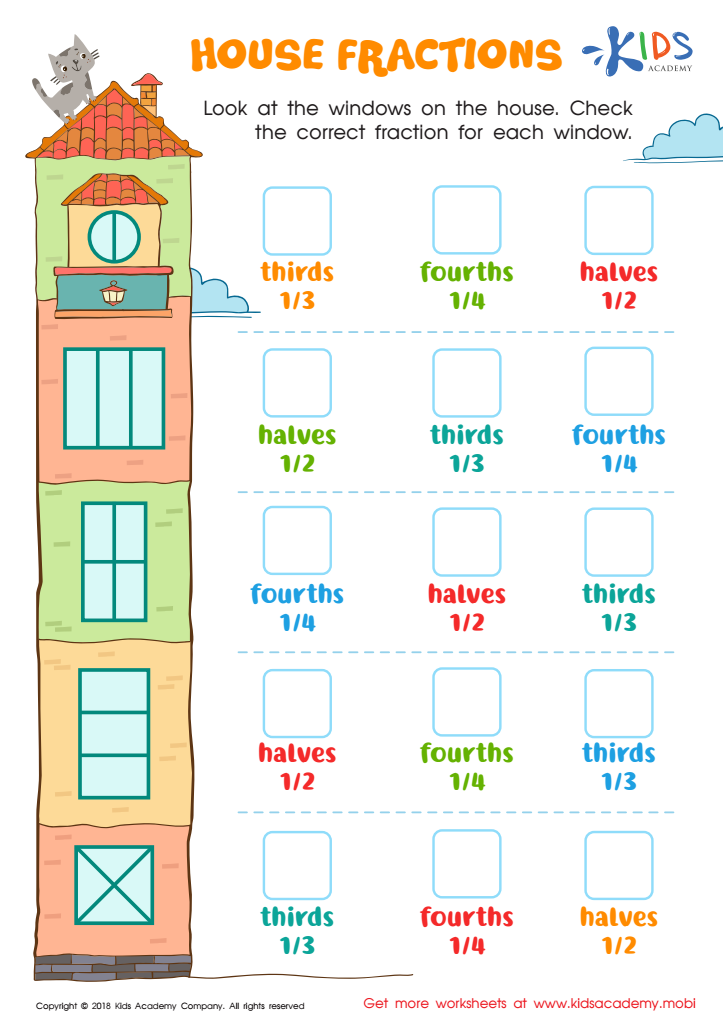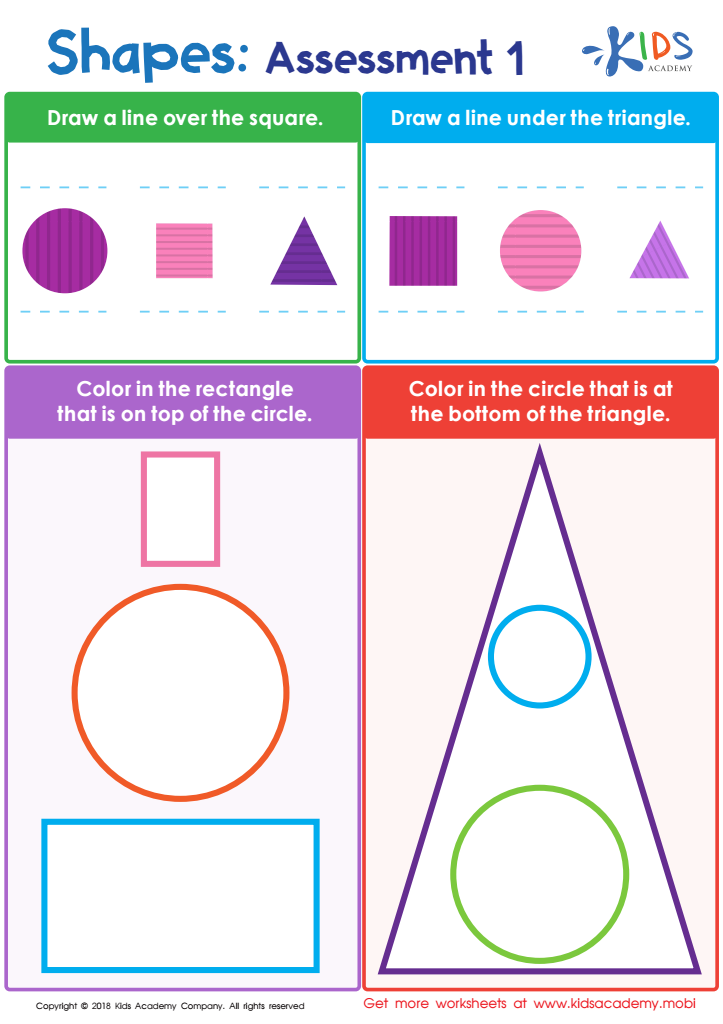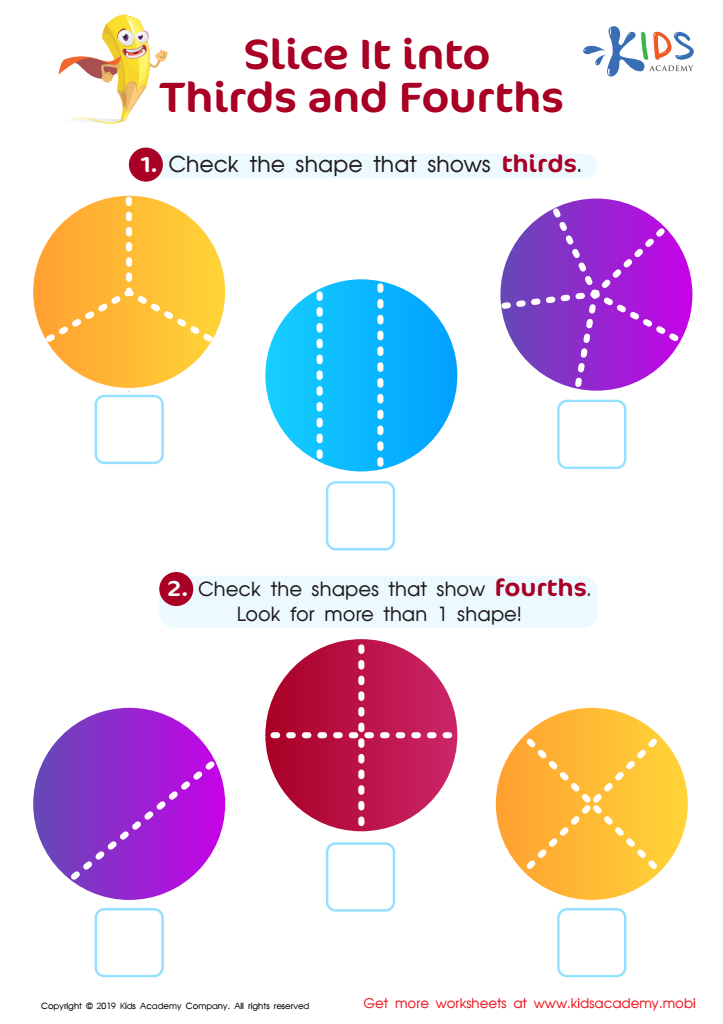Fraction comparison Geometry Worksheets for Ages 3-9
4 filtered results
-
From - To
Explore our engaging Fraction Comparison Geometry Worksheets designed for children ages 3-9! These worksheets provide a fun and interactive way to help young learners grasp the essential concepts of fractions and geometry. With colorful visuals and age-appropriate activities, kids will develop their critical thinking and problem-solving skills as they compare fractions in various geometric contexts. Perfect for both classroom and home learning, our materials foster a love for math through hands-on practice and creativity. Whether you're preparing your child for future math challenges or seeking to reinforce classroom lessons, our Fraction Comparison Geometry Worksheets are the ideal resource for early math education!


Matching Fractions Worksheet


House Fractions Worksheet


Shapes: Assessment 1 Worksheet


Slice in Thirds Fourths Worksheet
Understanding fraction comparison and geometry is crucial for children ages 3-9, as it forms the foundation for more advanced mathematical concepts later in life. Early exposure to these topics helps children develop essential skills, such as critical thinking, problem-solving, and spatial awareness.
Parents and teachers should recognize that comparing fractions teaches children about part-whole relationships, which is vital in everyday life. For instance, understanding fractions helps kids understand concepts like sharing, dividing, and measuring, fostering important social skills and collaboration during group activities.
Moreover, incorporating geometric shapes enhances children's visual-spatial skills and aids in their ability to visualize mathematical concepts. Learning about shapes and their properties allows kids to see their relevance in the world, making math more engaging and tangible.
By nurturing a solid comprehension of fraction comparison and geometry, adults set the stage for children's confidence in math as they progress to higher grades and more complex concepts. Ultimately, this early foundation empowers children not just in mathematics, but in the analytical skills necessary for everyday decision-making, science, and critical tasks as they grow. Investing time in these areas can significantly enhance a child's educational journey and lifelong learning experiences.
 Assign to My Students
Assign to My Students






























